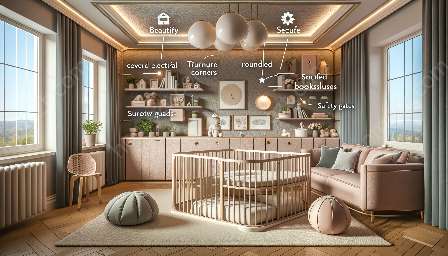Safety gates play a crucial role in ensuring a secure environment for children, especially in nurseries and playrooms. When it comes to child safety, taking the necessary measures to protect them from potential hazards is paramount. Safety gates offer an effective way to create barriers and prevent children from accessing dangerous areas, such as stairs, kitchens, or rooms with potentially harmful objects.
The Importance of Safety Gates
Safety gates are vital in maintaining a safe and controlled environment for children. By installing safety gates, caregivers and parents can limit a child's access to certain areas, minimizing the risk of accidents and injuries. The use of safety gates also allows children to explore and play freely within designated areas without the constant concern of potential dangers.
Moreover, safety gates provide peace of mind for caregivers, knowing that children are protected from potential hazards. Whether in a nursery or playroom setting, safety gates offer a secure boundary that helps ensure a child's safety without hindering their natural curiosity and desire to explore.
Types of Safety Gates
There are various types of safety gates available to cater to different needs and spaces. These include pressure-mounted gates, hardware-mounted gates, and retractable gates. Each type offers unique features and benefits, making them suitable for specific areas within nurseries and playrooms.
- Pressure-Mounted Gates: These gates are designed to be installed without the need for hardware, making them ideal for areas that require temporary barriers, such as doorways and hallways. They are easy to set up and remove, providing flexibility for caregivers.
- Hardware-Mounted Gates: Known for their sturdiness and durability, hardware-mounted gates are suitable for areas that require a more permanent barrier, such as the top of stairs. They offer superior security and stability, making them ideal for long-term use.
- Retractable Gates: These gates provide a versatile solution for creating barriers in various spaces. They can be easily retracted when not in use, offering a seamless and space-saving option for nurseries and playrooms.
Enhancing Safety Measures
In addition to the installation of safety gates, there are other essential safety measures that can further enhance the overall protection of children in nurseries and playrooms. These include:
- Childproofing: Implementing childproofing measures, such as securing furniture, covering electrical outlets, and keeping small objects out of reach, helps reduce the risk of accidents and injuries.
- Safety Education: Providing caregivers and parents with guidance on child safety practices and emergency procedures is crucial in promoting a safe environment for children.
- Regular Supervision: Ensuring consistent and attentive supervision of children, especially in play areas, is key to preventing accidents and responding promptly in case of emergencies.
Integrating Safety Gates with Nursery and Playroom Design
When incorporating safety gates into the design of nurseries and playrooms, it's important to consider both functionality and aesthetics. Selecting safety gates that complement the overall design and layout of the space is essential in creating a harmonious environment.
Opt for safety gates that blend seamlessly with the existing decor and color scheme, ensuring they add a visually appealing element to the space. Additionally, choosing gates with features such as see-through panels or decorative patterns can enhance the visual appeal while maintaining safety.
Conclusion
Ensuring the safety of children within nurseries and playrooms is a top priority for caregivers and parents. Safety gates serve as a fundamental tool in establishing secure boundaries and reducing the risk of accidents. By implementing safety gates along with other essential safety measures, such as childproofing and safety education, a safe and nurturing environment can be created for children to thrive and explore with confidence.



